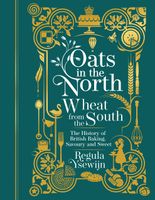Label
All
0
Clear all filters
Save 25% on ckbk Premium Membership with code FALLFLAVORS 🍁
Industrial bread
Appears in
Published 2020
The wheat that traditionally grew in Great Britain is a soft wheat with a low protein or gluten content that is unsuitable for large, airy loaves of bread. As a result, harder wheat was imported from Canada and America very early on, but this made bread expensive. After the war years, the British were tired of the brown war bread and craved soft white bread. To meet this demand, Chorleywood research bakers in 1961 developed a method that could make use of British soft wheat and that was ready to bake in a fraction of the time normally required to make a decent bread. Adding hard fats, extra yeast and a number of chemicals and then mixing the dough at high speed created the iconic British bread: rectangular like a brick, spongy and pre-sliced into neat square slices. This made the bread cheap but it also made the bread British. Today the Chorleywood method is used in industrial bakeries worldwide. It meant the end of many small artisan bakeries who had to charge more money for their higher-quality artisan breads.
Part of
Advertisement
Related Recipes
-
-
-
-
Related Reference
-
-
-
-
Advertisement
The licensor does not allow printing of this title



